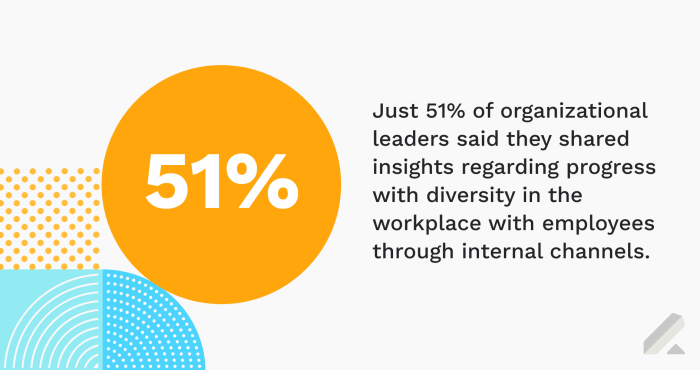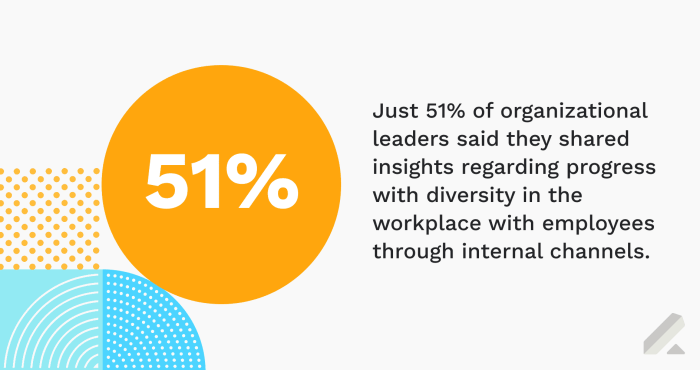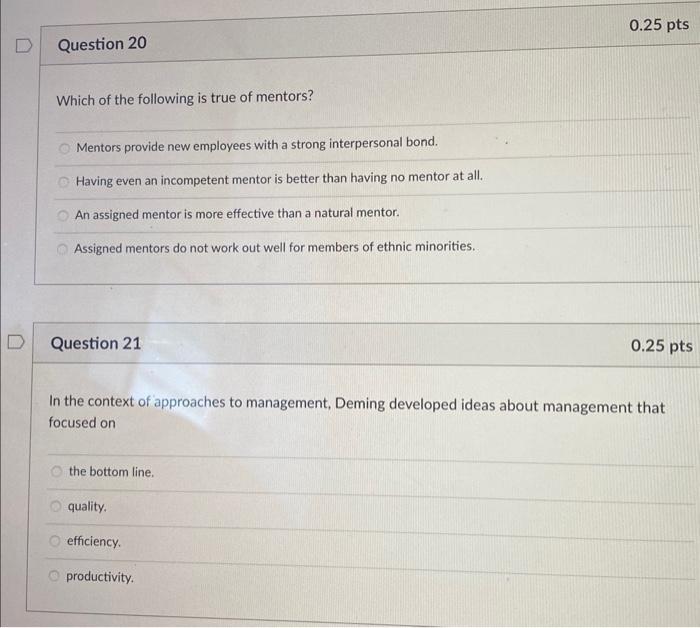Diversity in the workplace is more than just a buzzword; it’s a fundamental shift in how we approach business. This guide dives deep into the multifaceted nature of workplace diversity, exploring everything from defining the concept to the practical strategies for implementation. From understanding the nuances of different types of diversity to the challenges of fostering inclusion, we’ll examine the critical role that diversity plays in shaping a thriving and profitable company.
We’ll examine the tangible benefits of a diverse workforce, highlighting how it fuels creativity, improves problem-solving, and deepens our understanding of customers. However, achieving true diversity requires careful planning and execution. We’ll discuss the common obstacles and biases, offering actionable strategies to navigate these hurdles and build a culture of acceptance. This exploration will also cover how to measure the success of diversity initiatives and look ahead to the future of workplace diversity, incorporating technological advancements to ensure that our approaches remain relevant and impactful.
Defining Diversity in the Workplace
Diversity in the workplace is more than just a buzzword; it’s a fundamental shift in how organizations approach talent acquisition, retention, and overall success. It recognizes that a workforce composed of individuals from diverse backgrounds brings a multitude of perspectives, experiences, and skills to the table. This richness in human capital can drive innovation, creativity, and problem-solving, leading to a more robust and competitive organization.Understanding diversity goes beyond simply acknowledging differences; it involves actively valuing and leveraging those differences to create a truly inclusive environment where everyone feels respected, supported, and empowered to contribute their unique talents.
This necessitates a proactive approach that goes beyond mere representation to encompass genuine inclusion and equitable opportunities for all.
Defining Diversity
Diversity in the workplace encompasses a wide spectrum of human differences. It isn’t solely about race and ethnicity, but also encompasses gender, age, sexual orientation, religious beliefs, and abilities. Each individual’s unique combination of characteristics shapes their perspective and contributes to the overall diversity of the workforce.
Diversity vs. Inclusion
Diversity is about representation, while inclusion is about creating a sense of belonging and ensuring that all individuals feel valued and respected. While diversity focuses on the presence of different groups, inclusion focuses on the active participation and contribution of those groups. An inclusive environment fosters an atmosphere where everyone feels comfortable expressing their ideas, sharing their experiences, and collaborating effectively.
A diverse and inclusive workplace benefits everyone involved.
Types of Diversity Initiatives and Programs
Organizations implement various initiatives to foster diversity and inclusion. These programs aim to create a more equitable and supportive work environment. They encompass various approaches, from recruitment strategies to employee resource groups and training programs.
Diversity in the workplace is crucial, but maybe the focus on “leadership” is a bit misplaced. Instead of striving to be the boss, why not find your own unique strength, like a special superpower? That’s the approach championed in this insightful piece on being a leader is overrated find your unique superpower successful. Ultimately, diverse teams thrive when individuals leverage their unique talents, rather than trying to fit into a prescribed leadership mold.
This fosters a more innovative and productive work environment for everyone.
Types of Diversity and Examples
| Type of Diversity | Examples |
|---|---|
| Race and Ethnicity | Individuals from different racial and ethnic backgrounds, including African Americans, Asian Americans, Hispanic Americans, and others. |
| Gender | Men and women, including transgender and gender non-conforming individuals. |
| Age | Employees spanning various age groups, from young professionals to seasoned veterans. |
| Sexual Orientation | Individuals identifying as heterosexual, lesbian, gay, bisexual, asexual, or other sexual orientations. |
| Religious Beliefs | Individuals adhering to various religions, including Christianity, Islam, Judaism, Hinduism, Buddhism, and others, as well as those with no religious affiliation. |
| Abilities | Individuals with physical or mental disabilities, including those with learning differences or chronic illnesses. |
Benefits of Workplace Diversity
A diverse workplace isn’t just a trend; it’s a strategic imperative for success in today’s globalized economy. Companies that embrace diversity unlock a wealth of advantages, from boosting innovation to enhancing profitability. The richness of perspectives, experiences, and backgrounds within a diverse team fuels creativity, improves problem-solving, and ultimately drives better decision-making.A diverse workforce allows companies to better understand and connect with a wider range of customers.
This deeper understanding leads to more effective marketing strategies, tailored products, and improved customer service, ultimately boosting revenue and market share.
Improved Creativity and Problem-Solving
A diverse team brings a multitude of perspectives and approaches to problem-solving. Employees from different backgrounds often have unique experiences, skills, and ways of thinking that can lead to innovative solutions. When various viewpoints are considered, the potential for novel ideas and creative problem-solving significantly increases. This variety in thought processes helps overcome biases and encourages the exploration of unconventional solutions.
For example, a team composed of individuals with diverse cultural backgrounds may come up with marketing strategies that resonate with a wider range of consumers.
Enhanced Decision-Making
A diverse workforce can lead to better decision-making through more thorough analysis and consideration of different viewpoints. When various backgrounds and perspectives are included in the decision-making process, the potential for overlooking important factors or making biased choices decreases. This inclusion of different voices leads to more comprehensive and well-rounded decisions. For example, a diverse team tackling a product launch might consider potential market reactions from different demographics, resulting in a more successful product rollout.
Innovation and Understanding Customer Needs
Diversity fosters innovation by challenging assumptions and encouraging the exploration of new ideas. When people from different backgrounds work together, they are more likely to question established norms and practices, leading to novel approaches and solutions. This is particularly valuable in understanding customer needs. A team with members from various cultural backgrounds can better identify and address specific needs of diverse customer groups.
For instance, a diverse team designing a new software application might incorporate features that cater to the specific needs of different user groups, resulting in higher user satisfaction and greater market penetration.
Correlation Between Diversity and Profitability
Studies have consistently shown a strong correlation between workplace diversity and increased profitability. Companies with diverse leadership teams and workforces often outperform their less diverse counterparts. This is attributed to a variety of factors, including improved decision-making, enhanced innovation, and a better understanding of the diverse customer base. A diverse team can develop more effective strategies for marketing to a wider range of consumers.
Impact of Diversity on Company Aspects
| Aspect | Positive Impact of Diversity | Negative Impact of Lack of Diversity |
|---|---|---|
| Employee Morale | Increased sense of belonging and inclusivity, leading to higher job satisfaction and retention rates. | Potential for feelings of exclusion, discrimination, and decreased motivation. |
| Customer Satisfaction | Improved understanding of diverse customer needs, resulting in more targeted products and services, and enhanced customer relationships. | Products and services may not resonate with diverse customer groups, potentially leading to lower customer satisfaction and reduced market share. |
| Financial Performance | Higher profitability, increased innovation, and improved market share due to a better understanding of the market. | Reduced profitability, decreased innovation, and potentially lower market share due to a limited understanding of the market. |
Challenges of Implementing Diversity Initiatives

Building a truly diverse and inclusive workplace isn’t simply about hiring a few people from different backgrounds. It’s a multifaceted process that often faces significant hurdles. These obstacles, stemming from ingrained biases and resistance to change, can derail even the best-intentioned diversity and inclusion programs. Understanding these challenges is crucial for developing effective strategies to overcome them and create a truly equitable environment.Addressing diversity initiatives requires careful consideration of potential roadblocks and proactive strategies to navigate them.
Organizations must be prepared to confront ingrained biases, foster a culture of acceptance, and provide resources to support employees from underrepresented groups. This often means challenging deeply held beliefs and creating a safe space for open dialogue and constructive feedback.
Common Obstacles to Implementation, Diversity in the workplace
Implementing diversity and inclusion programs often faces resistance from various sources. Employees may feel threatened by change or perceive the program as unnecessary or even detrimental to their work environment. Lack of clear leadership support, inadequate training, and a lack of tangible action plans can also hinder progress. Furthermore, measuring the effectiveness of diversity initiatives and adapting strategies based on data and feedback is critical to success.
Potential Biases and Discrimination
Unconscious biases can significantly impact the implementation of diversity initiatives. These biases, often rooted in stereotypes and societal norms, can lead to discriminatory hiring practices, unequal opportunities for promotion, and unequal treatment in performance reviews. Microaggressions, subtle but harmful comments or actions, can also contribute to a hostile work environment. Recognizing and addressing these biases is essential for creating a truly inclusive environment.
For example, a hiring manager might subconsciously favor candidates with similar backgrounds, even if other candidates are equally qualified.
Strategies to Address Resistance to Change
Overcoming resistance to change requires a multifaceted approach. Open communication, education, and training programs are essential for dispelling myths and promoting understanding. Leadership commitment and active involvement in diversity initiatives send a strong message that the organization values inclusion. Transparency and accountability mechanisms can also help build trust and ensure that diversity programs are effectively implemented. It is also important to celebrate successes and acknowledge challenges openly, learning from both to continuously improve the process.
Fostering a Culture of Acceptance
Creating a culture of acceptance requires ongoing effort and a commitment to inclusivity at all levels of the organization. Promoting respectful communication and actively challenging biases are critical steps. Providing resources and support for employees from underrepresented groups, including mentorship programs and employee resource groups, can help foster a sense of belonging. Encouraging diverse perspectives and actively seeking out feedback from different groups will further contribute to the culture of acceptance.
Table of Potential Roadblocks and Strategies
| Potential Roadblock | Strategies to Overcome |
|---|---|
| Resistance to change from employees | Open communication, education programs, emphasizing benefits to all employees, and showcasing successful diversity initiatives in other organizations. |
| Lack of leadership support | Actively involve senior leadership in diversity initiatives, highlight the business case for diversity, and ensure that diversity goals are integrated into performance metrics. |
| Inadequate training for employees | Provide comprehensive training on unconscious bias, cultural awareness, and inclusive communication. |
| Lack of measurable goals and evaluation methods | Establish clear, measurable goals and metrics to track progress, regularly evaluate the effectiveness of diversity initiatives, and adapt strategies based on data. |
| Lack of resources and support for underrepresented groups | Develop and implement mentorship programs, employee resource groups, and other resources that support the needs of underrepresented groups. |
Strategies for Promoting Diversity
Building a truly diverse and inclusive workplace isn’t just about hiring a few people from different backgrounds. It’s a multifaceted process that requires proactive strategies across all aspects of the employee lifecycle. A comprehensive approach ensures that diversity isn’t just a goal, but an integral part of the company culture.Effective diversity initiatives require a long-term commitment, starting with a clear understanding of the desired outcomes and adapting strategies as needed.
Promoting diversity in the workplace is crucial, but sometimes navigating differing perspectives can be tricky. Finding common ground requires understanding and empathy, skills that can be honed through practicing mindfulness. For instance, incorporating 13 small daily habits, like mindful breathing and body scans, can foster a greater sense of self-awareness and help us better connect with others, ultimately improving our interactions in the workplace.
This kind of self-compassion and awareness, cultivated by 13 small daily habits practice mindfulness , can create a more inclusive and productive environment for everyone.
This commitment needs to be visible throughout the organization, from the top leadership down to every team member.
Attracting Diverse Talent
Attracting diverse talent requires a shift in how organizations present themselves to potential candidates. A company’s reputation for diversity and inclusion plays a significant role in attracting top talent. Companies need to ensure their job postings and recruitment materials are inclusive, avoid bias, and highlight the organization’s commitment to diversity and inclusion. Using diverse imagery and language in recruitment materials is crucial.
Recruiting Diverse Talent
Recruitment strategies must actively target diverse talent pools. This might involve partnering with organizations focused on supporting underrepresented groups, attending industry events frequented by diverse professionals, and proactively seeking candidates from historically excluded communities. For example, a company could use a diverse network of recruiters to identify qualified candidates from diverse backgrounds.
Retaining Diverse Talent
Retaining diverse talent is as crucial as attracting them. A supportive and inclusive workplace culture is essential. This includes offering mentorship programs, sponsorship opportunities, and employee resource groups (ERGs) to foster a sense of belonging. Regular feedback mechanisms, ensuring opportunities for growth and development, and competitive compensation packages are key factors in retaining diverse employees.
Creating Inclusive Workplace Policies and Practices
Inclusive workplace policies and practices are essential for creating a fair and equitable environment for all employees. These policies should address issues such as equal pay, flexible work arrangements, and harassment prevention. They should ensure equal opportunities for growth and advancement regardless of background.
Inclusive Leadership and Mentorship Programs
Inclusive leadership is critical for fostering a welcoming and supportive work environment. Leaders who actively promote diversity and inclusion set the tone for the entire organization. Mentorship programs, pairing experienced employees with newer hires, provide valuable guidance and support, especially for underrepresented groups.
Importance of Employee Resource Groups (ERGs)
Employee Resource Groups (ERGs) provide platforms for employees from shared backgrounds to connect, support each other, and share their perspectives. These groups can also act as valuable resources for the organization, providing insights into the needs and experiences of diverse employees. They can also promote awareness of different cultures and perspectives within the workplace.
Best Practices for Promoting Diversity and Inclusion Across Departments
| Department | Attracting/Recruiting | Retaining | Inclusive Practices |
|---|---|---|---|
| Human Resources | Review job descriptions for bias; partner with diversity organizations | Implement fair performance reviews; provide training on unconscious bias | Develop inclusive onboarding programs; create flexible work policies |
| Marketing & Communications | Use diverse imagery and language in advertisements; feature diverse employees in marketing materials | Offer opportunities for career development; promote a culture of appreciation for diverse perspectives | Ensure inclusive language in company communications; create diverse content calendars |
| Sales | Network with diverse business organizations; target diverse customer segments | Offer sales training focused on diverse customer needs; create support systems for sales reps | Develop inclusive sales strategies; create diverse customer touchpoints |
| Engineering | Partner with universities and technical schools to recruit diverse students; highlight diverse role models | Offer mentorship programs; provide access to training and development opportunities | Create inclusive workspaces; encourage knowledge sharing among teams |
| Finance | Partner with financial institutions supporting diverse communities; advertise opportunities in diverse communities | Implement transparent compensation policies; create equitable promotion opportunities | Create inclusive finance policies; promote financial literacy programs |
Measuring the Impact of Diversity Initiatives
Assessing the effectiveness of diversity and inclusion (D&I) programs is crucial for demonstrating their value and identifying areas needing improvement. Simply implementing policies isn’t enough; organizations must actively monitor the impact to ensure they’re achieving their goals. Measuring the success of D&I initiatives provides data-driven insights, fostering a more inclusive and equitable workplace.A comprehensive approach to measuring the impact of D&I initiatives goes beyond simple headcounts.
It involves evaluating the program’s influence on employee experiences, organizational culture, and business outcomes. This allows for a holistic view of the program’s effectiveness and facilitates informed decision-making for future improvements.
Methods for Assessing Program Effectiveness
Several methods can be employed to evaluate the effectiveness of D&I programs. These methods should be aligned with the specific goals and objectives of the program. Qualitative methods, such as surveys and focus groups, offer valuable insights into employee experiences and perceptions. Quantitative methods, like data analysis on representation in various roles, can provide objective measures of progress.
Metrics for Tracking Progress
Tracking progress requires establishing clear metrics that align with the program’s goals. These metrics should be measurable, relevant, achievable, and time-bound (SMART). Some key metrics include:
- Representation by demographic group: Monitoring the representation of different groups in various job levels and departments is crucial. Tracking this data over time provides a clear picture of the program’s impact on representation.
- Employee satisfaction and engagement: Surveys and feedback mechanisms can measure employee satisfaction with the D&I program and overall workplace culture. Improved engagement and satisfaction indicators show the program’s positive impact.
- Employee retention rates: Retention rates for employees from underrepresented groups can be tracked. A higher retention rate suggests a more inclusive and supportive environment.
- Bias and discrimination incidents: Monitoring the number and type of reported bias and discrimination incidents provides insight into the program’s effectiveness in fostering a respectful and inclusive environment.
- Employee perceptions of fairness and equity: Surveys can measure employees’ perceptions of fairness and equity in promotion opportunities, resource allocation, and other key areas. These data points demonstrate the impact of the program on employee perception of the organization.
Importance of Regular Evaluation and Feedback
Regular evaluation and feedback are essential for ongoing improvement. Collecting feedback from employees, managers, and other stakeholders allows for a more comprehensive understanding of the program’s strengths and weaknesses. This process ensures the program remains relevant and effective over time. Continuous evaluation fosters a culture of learning and improvement.
Metrics Table for Measuring Success
| Metric | Description | Measurement Method | Target/Goal |
|---|---|---|---|
| Representation by demographic group | Percentage of employees from various groups in different roles and departments | Data analysis from HR databases | Increase representation in underrepresented groups |
| Employee satisfaction and engagement | Employee feedback on D&I program and overall workplace culture | Surveys, focus groups, employee feedback channels | Increase satisfaction and engagement scores |
| Employee retention rates | Retention rates of employees from underrepresented groups | Employee turnover data | Maintain or increase retention rates for underrepresented groups |
| Bias and discrimination incidents | Number and type of reported bias and discrimination incidents | Tracking of complaints and reports | Decrease in incidents and instances of bias |
| Employee perceptions of fairness and equity | Employee perceptions of fairness in promotion opportunities and resource allocation | Surveys, focus groups | Improve perceptions of fairness and equity |
Case Studies of Successful Diversity Programs: Diversity In The Workplace
Building a truly diverse and inclusive workplace isn’t just about ticking boxes; it’s about fostering a culture where every employee feels valued and empowered to contribute their unique perspectives. Real-world examples of companies that have successfully implemented diversity initiatives offer valuable insights into strategies that work and the tangible benefits they produce. These case studies demonstrate that diversity isn’t just a moral imperative; it’s a powerful driver of innovation and business success.Successful diversity programs are more than just policies; they are deeply embedded within the company culture, impacting everything from recruitment to promotion and employee engagement.
These initiatives are not one-size-fits-all, reflecting the unique needs and contexts of different organizations. Learning from these successes can help other companies navigate the complexities of creating a truly inclusive environment.
Examples of Companies and Their Strategies
Companies that prioritize diversity and inclusion often see a ripple effect throughout their operations. They create a workplace where diverse viewpoints are not just tolerated but actively sought out and valued. This creates a richer pool of ideas and perspectives, leading to more innovative solutions and a greater understanding of their customer base.
Promoting diversity in the workplace is crucial for innovation and growth. Just like incorporating a variety of ingredients elevates a dish, a diverse workforce brings a range of perspectives and ideas. Learning about the amazing benefits of sweet potatoes and discovering 5 refreshing recipes can inspire us to embrace diverse culinary experiences, amazing benefits sweet potatoes 5 refreshing recipes.
Ultimately, valuing different backgrounds and experiences in the workplace leads to a more robust and successful environment for everyone.
- Microsoft has implemented a comprehensive set of programs focused on fostering a more inclusive culture. These initiatives range from leadership development programs specifically designed for women and underrepresented minorities to mentoring programs and employee resource groups. The company actively monitors the representation of diverse groups in its workforce at various levels, regularly evaluating and adapting their programs to achieve their diversity goals.
A key strategy is the use of data-driven insights to identify areas for improvement and track progress over time. The benefits include increased employee engagement, improved creativity, and enhanced brand reputation.
- Google, renowned for its innovative approach, has created a multifaceted diversity program. This program encompasses unconscious bias training for managers, sponsorship programs to support underrepresented talent, and the development of inclusive leadership skills. By integrating these strategies into their existing management practices, Google has shown that creating a diverse and inclusive workplace can also benefit their business. The tangible benefits include improved employee retention, higher innovation rates, and an enhanced global reputation.
- Accenture, a global professional services company, has established a robust diversity and inclusion program focused on attracting and retaining a diverse workforce. The company emphasizes the importance of unconscious bias awareness and active mentorship. Accenture also offers a wide range of employee resource groups to foster networking and support. The company’s focus on a holistic approach to diversity and inclusion, incorporating it into all aspects of the business, has led to positive outcomes in employee engagement, productivity, and innovation.
Key Strategies for Success
Successful diversity programs often share common threads. They recognize that diversity is not just about representation but about creating an environment where every employee feels valued, respected, and empowered to contribute their unique talents.
- Data-Driven Approach: Companies often use data analysis to identify gaps in representation and measure the impact of their initiatives. This allows for a targeted approach to address specific needs and track progress over time.
- Leadership Commitment: Diversity and inclusion initiatives require unwavering support from leadership to be successful. Leaders need to actively model inclusive behaviors and foster a culture where diversity is valued.
- Employee Resource Groups (ERGs): ERGs provide a platform for employees from diverse backgrounds to connect, share experiences, and advocate for their interests within the organization.
- Inclusive Leadership Training: Training programs help managers develop the skills to lead diverse teams effectively and recognize and mitigate unconscious biases.
Summary Table of Case Studies
| Company | Key Strategies | Outcomes |
|---|---|---|
| Microsoft | Leadership development programs, mentoring, employee resource groups, data-driven monitoring | Increased employee engagement, improved creativity, enhanced brand reputation |
| Unconscious bias training, sponsorship programs, inclusive leadership development | Improved employee retention, higher innovation rates, enhanced global reputation | |
| Accenture | Attracting and retaining a diverse workforce, unconscious bias awareness, mentorship, employee resource groups | Positive outcomes in employee engagement, productivity, and innovation |
Future Trends in Workplace Diversity

The landscape of workplace diversity is constantly evolving, driven by societal shifts, technological advancements, and a growing awareness of the importance of inclusion. Predicting the future requires careful consideration of these factors, enabling organizations to proactively adapt and leverage the opportunities that arise. This includes understanding emerging demographics, appreciating the impact of technology, and recognizing the need for continuous improvement in diversity and inclusion strategies.
Emerging Demographics and Their Impact
The global workforce is becoming increasingly diverse, with generational differences, cultural backgrounds, and abilities shaping the workplace. Understanding these nuances is crucial for creating inclusive environments. Millennials and Gen Z, in particular, bring a heightened awareness of social justice and equity to the workplace. Their expectations for workplace culture and social responsibility will influence diversity initiatives. Furthermore, an aging workforce and increasing numbers of individuals with disabilities necessitate flexible work arrangements and accommodations to ensure equal opportunities.
Understanding these evolving demographics is essential for proactive strategies in attracting, retaining, and empowering a diverse workforce.
Technological Advancements and Their Role
Technology is transforming the workplace in profound ways, offering both challenges and opportunities for diversity and inclusion. AI-powered recruitment tools can inadvertently perpetuate biases if not carefully designed and monitored. Remote work opportunities can break down geographical barriers, fostering greater diversity in hiring pools, but also pose challenges for inclusion, requiring conscious efforts to build a sense of community and avoid digital isolation.
The rise of virtual reality and augmented reality technologies might offer new avenues for training and development, potentially fostering a more inclusive and equitable learning environment for all employees.
Potential Future Trends in Diversity and Inclusion
| Trend | Emerging Demographics | Technological Advancements | Examples |
|---|---|---|---|
| Rise of the Gig Economy | Increased participation of independent contractors and freelancers from diverse backgrounds. | Online platforms facilitating remote work and project-based collaborations. | Freelance designers from various cultural backgrounds contributing to global projects. |
| Focus on Neurodiversity | Growing recognition and acceptance of individuals with neurodivergent conditions (e.g., ADHD, autism). | Development of tools and platforms to support neurodivergent employees (e.g., flexible work schedules, noise-canceling headphones). | Companies implementing flexible work arrangements for employees with ADHD. |
| AI-Powered Diversity Initiatives | Increased use of data analytics to identify and mitigate bias in hiring and promotion processes. | AI-driven tools for identifying and addressing unconscious biases in communication and decision-making. | Using AI to analyze employee feedback and identify areas for improvement in diversity and inclusion programs. |
| Global Talent Acquisition | Attracting top talent from diverse international markets. | Translation tools and global communication platforms. | International tech companies hiring engineers from different regions. |
Concluding Remarks
In conclusion, fostering diversity in the workplace is not just a social responsibility; it’s a strategic imperative for businesses seeking to thrive in today’s competitive landscape. By understanding the various dimensions of diversity, acknowledging the challenges, and implementing effective strategies, companies can unlock a wealth of benefits, from increased innovation to enhanced employee morale and financial performance. The future of work depends on our ability to embrace diversity and build truly inclusive environments.











